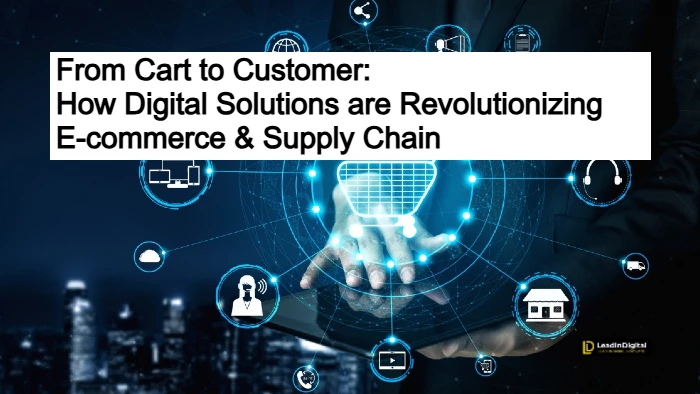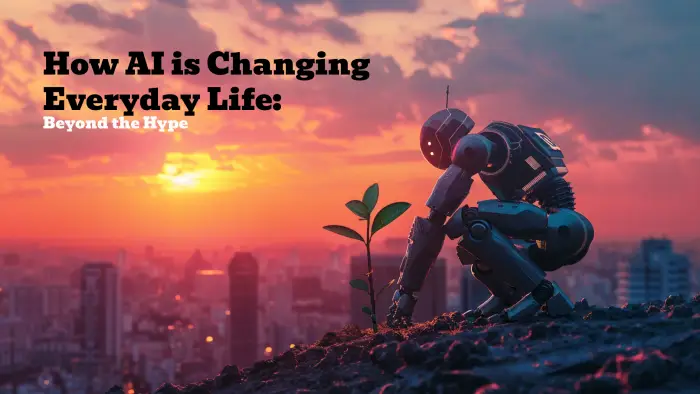
In 2025, supply chains and e-commerce will encompass a digitally-enabled, resilient ecosystem that is responsive to customer demands, operational agility, and environmental consciousness. Incorporating cutting-edge AI and automation, optimizing inventory, establishing hyperlocal hubs, and incorporating ethical, circular principles into every action present businesses with both unprecedented opportunities and a volatile environment.
Top Trends Shaping E-commerce & Supply Chains
| Trend | Technology Example | Business Impact |
|---|---|---|
| Digital Supply Chain 2025 | Data Analytics, IoT | Faster, more accurate planning |
| Generative AI in SCM | AI-based forecasting | Resilient inventory, agile flows |
| Hyperlocal Warehousing | Micro-fulfillment centers | Rapid local delivery, cost savings |
| Warehouse Automation | AMRs, robotic arms | Labor efficiency, reduced errors |
| Omnichannel Fulfillment | BOPIS, unified inventory | Seamless customer experience |
| Green Logistics & Circular Supply Chain | Sustainable shipping, recycling | Lower carbon footprint, market trust |
| Supply Chain Cybersecurity | Blockchain, robust IT | Data protection, compliance |
| Composable Commerce | Modular platforms, APIs | Fast iteration, flexible integration |
| Nearshoring/Reshoring | Regional sourcing | Risk mitigation, speed |
| Real-time Visibility | Digital twins, dashboards | Transparency, customer trust |
The Function of Automation and AI
Artificial Intelligence
With its predictive analytics for inventory, dynamic supplier selection, and autonomous risk modeling for disruptions, generative AI is completely changing supply chain optimization. These days, AI agents handle complexity at scale by automating everything from customer service to procurement.
Predictive Analytics
AI-powered analytics methods enhance demand forecasting by utilizing real-time scenarios, market fluctuations, and historical sales data. This leads to fewer stockouts, reduced expenses, and quicker change adaptation.
Automation in Warehouses
Advanced AS/RS systems, autonomous mobile robots, and robotic arms are essential components of contemporary warehouses. They solve labor shortages and scale by managing repetitive tasks, increasing throughput, and freeing up skilled workers for higher-value positions.
Operational Efficiency and Resilience
Warehousing that is hyperlocal
The demand for micro-fulfillment centers in urban areas is being driven by the global boom in 10-minute deliveries. By bringing inventory closer to consumers, quick delivery is made possible, expenses are reduced, and the dynamics of city rentals are altered. Instances such as Blinkit and Swiggy Instamart demonstrate how rapid commerce propels intricate, regional logistics systems.
Autonomous supply chains and nearshoring
Companies are sourcing and manufacturing closer to customers as a result of global risks like shipping surcharges and geopolitical instability. AI is used by autonomous supply chain processes for system resilience, process orchestration, and real-time decision-making.
Improving the Client Experience
Extreme Personalization
Next level personalization, from tailored loyalty programs to product recommendations, is powered by AI and data analytics. Each consumer is treated as an individual by brands, which use behavioral data from various channels to create experiences that were unimaginable just a few years ago.
Multichannel Satisfaction
Consumers anticipate online shopping, in-store pickup, real-time status updates, and easy returns. Diverse delivery options, real-time inventory management, and unified commerce platforms are now commonplace rather than uncommon.
Ethical sourcing and sustainability
Environmentally Friendly Logistics
ESG criteria, such as circularity (reuse, recycle), traceable and ethical sourcing, and the use of renewable energy in transportation, are being given priority in supply chains. Blockchain is being used more and more for end-to-end traceability, particularly in highly regulated industries like food and medicine.
Supply Chains That Are Circular
Companies reduce waste by implementing circular models, which involve recycling and reusing materials as well as using digital twins to track carbon emissions and source sustainably.
The Technical and Strategic Underpinnings
API Integration & Composable Commerce
Composable, API driven architecture is replacing monolithic design in enterprise e commerce platforms. This modularity lowers development bottlenecks and permits quick launches and integration of new services (payment, personalization, fulfillment).
Real-time visibility and digital twins
Virtual simulations, or digital twins, are crucial for strategy testing, disruption monitoring, and planning synchronization with actual circumstances. They provide companies with information on everything from sustainability metrics to inventory flows, allowing for intelligent, data-driven risk reduction and ongoing optimization.
Cybersecurity in the Supply Chain
Strong cybersecurity is a board-level necessity as digital connectivity increases. Advanced security measures, such as blockchain, encryption, and infrastructure, are essential for any organization due to ransomware, data breaches, and regulatory requirements.
Practical Implementation Checklist (Table)
| Initiative | Questions to Ask | Recommended Actions |
|---|---|---|
| Upgrade to AI/ML | What processes can be automated? | Invest in predictive analytics and autonomous agents |
| Hyperlocal Warehousing | Where are delivery bottlenecks? | Setup micro-fulfillment centers near key customers |
| Omnichannel Fulfillment | Does tech enable seamless integration? | Connect online/offline, unify inventory systems |
| Green Logistics | Are operations traceable & sustainable? | Implement blockchain, source ethically, embrace circularity |
| API Integration | Are systems modular and fast to adapt? | Iterate platform APIs, adopt composable commerce |
| Cybersecurity | What is the weakest tech link? | Audit security, invest in advanced protection |
Conclusion: 2025 Future Proofing
In 2025, digital transformation, resilience, and sustainability will be key components of improved supply chains and e-commerce. Even in a world of ongoing disruption and changing consumer expectations, companies that use generative AI, warehouse automation, omnichannel fulfillment, green logistics, and modular platform strategies will prosper. Now is the ideal moment to make investments in operational agility and digital supply chain capabilities.




